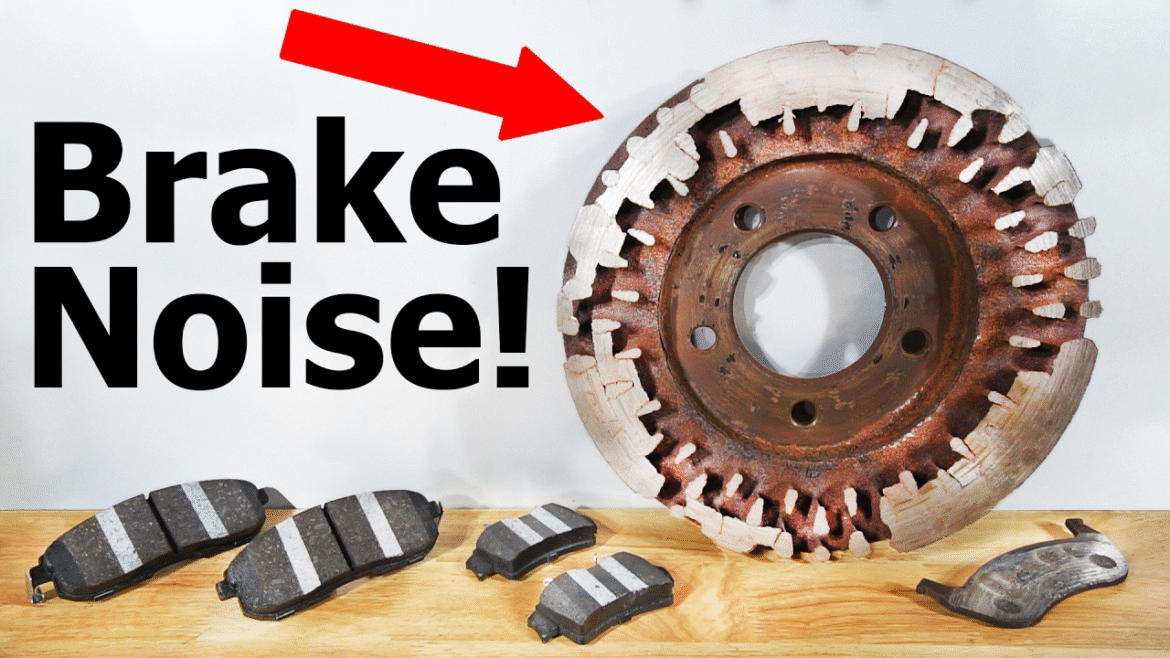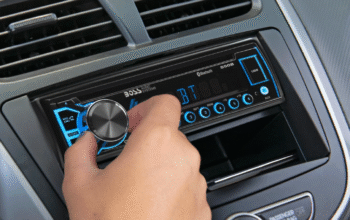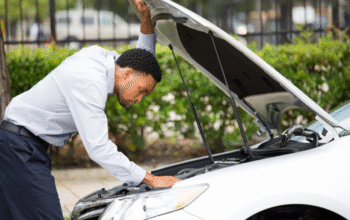In this blog we solve Squeaky Brakes Without Replacing Them. A squeaky brake is among the most frequent issues seen by drivers, especially in older vehicles, or vehicles subject to frequent stop-and-go traffic. If your brakes squeak every time you slow down, you might be asking yourself: is there a problem, or is it just noise? The good news is, for the most part, you can prevent brakes from squeaking and not have to have them replaced. This article will explain some of the possible causes, easy remedies, and when it is necessary to bring your vehicle to a mechanic.
Why Do Brakes Squeak?

Brakes work using friction. When you press the brake pedal, brake pads press against the rotors (or drums in some older vehicles), slowing down the car. This friction is what allows your vehicle to stop—but it also creates opportunities for noise.
Here are the most common causes of squeaky brakes:
- Dust or debris between the pad and rotor
- Moisture on the rotors
- Glazed brake pads
- Loose hardware
- Lack of brake lubrication
- Worn anti-rattle clips or shims
- Low-quality brake pads
- New brake pads not properly broken in
Sometimes, a squeak doesn’t mean anything is wrong. But it’s always worth checking, especially if the noise becomes louder or changes over time.
Tools You May Need
Before you start fixing squeaky brakes at home, here are some basic tools and supplies you’ll want to have:
- Jack and jack stands
- Lug wrench or tire iron
- Brake cleaner spray
- High-temperature brake grease
- Sandpaper (120 to 150 grit)
- Anti-squeal paste
- Ratchet and socket set
- Clean rags or paper towels
- Optional: torque wrench
These tools are affordable and will help you perform routine brake care yourself.
Easy Ways to Stop Squeaky Brakes Without Replacing Them
1. Clean the Brakes
Brake dust, road grime, and dirt can build up on the pads and rotors, especially in dry, dusty environments. This buildup can cause squeaks during braking.
To clean your brakes:
- Safely jack up the car and remove the wheel.
- Spray brake cleaner on the caliper, pads, and rotor.
- Use a clean rag to gently wipe away residue.
- Let everything dry completely before putting the wheel back on.
This simple cleaning can often remove the squeak completely, especially if the car has been sitting or was recently driven in wet weather.
2. Apply High-Temperature Brake Lubricant
Vibration is another frequent cause of squeaky brakes. During brake application, if metal parts of the brake system rattle or move slightly it can create a high-pitched sound. Using brake lubricant on certain contact points will decrease friction, and should reduce or eliminate the noise.
Where to apply brake lubricant:
- The back side of the brake pad (not the surface that contacts the rotor)
- The caliper pins or guide slides
- The edges of the pads that touch the caliper
Make sure to use brake-specific grease, as regular grease won’t handle the high temperatures created during braking.
3. Lightly Sand the Brake Pads
Glazing happens when brake pads get too hot and develop a shiny, smooth surface that reduces grip and increases squeaking. If your pads are still thick and in good shape, you can sand them down slightly.
Here’s how:
- Remove the brake pads.
- Use fine-grit sandpaper (120–150 grit) to gently sand the pad surface.
- Remove just the top layer until the shine disappears.
- Wipe the dust off and reinstall the pads.
This removes the glazed surface and helps the pads grip the rotor more effectively.
4. Use Anti-Squeal Paste
Anti-squeal compounds are simple to apply and diminish vibration noise. These pastes or sprays are used on the back of the brake pad before installation. They create a cushion between the brake pad and caliper to limit movement and squeaking.
Be careful not to apply the compound to the pad’s front surface or rotor, as this could reduce braking power.
5. Tighten Brake Hardware
Loose hardware is another sneaky cause of squeaks. Brake pads are held in place with small clips, shims, and bolts. If any of these are loose or missing, it can lead to metal-on-metal contact and noise.
What to check:
- Brake caliper bolts
- Pad clips or retaining pins
- Anti-rattle springs
- Caliper mounting hardware
Make sure everything is tight and seated properly. If something is missing or broken, replacements are cheap and easy to install.
6. Re-Bed the Brake Pads
If your brake pads are new, they might squeak simply because they haven’t been properly broken in (or “bedded”). Bedding in pads allows the surface of the pad and rotor to match each other, which can reduce noise.
To re-bed your pads:
- Drive to a safe, open road.
- Accelerate to about 35–40 mph.
- Firmly brake down to about 5 mph (don’t come to a full stop).
- Repeat this 4–6 times.
This process allows the pad and rotor to wear together evenly and create a smoother, quieter surface.
7. Change Your Driving Habits
This may sound odd, but how you drive affects how your brakes sound. Hard braking, riding the brakes downhill, or frequent stop-and-go driving increases wear and temperature—both of which can cause squeaks.
If possible, drive more smoothly, allow more distance between cars, and avoid hard stops unless necessary.
8. Choose Higher-Quality Pads Next Time
If you’re using low-cost brake pads, that may be the root cause of your noise. Cheaper pads often contain more metal content or low-quality materials that wear unevenly or create noise.
Next time you need new brakes, consider ceramic pads, which tend to be quieter and cleaner than semi-metallic types.
When Should You Replace the Brakes Instead?
If you’ve tried all the steps above and the brakes still squeak—or if other symptoms appear—it might be time to consider replacing parts.
Look out for:
- Grinding or scraping noises
- A brake pedal that feels soft or spongy
- Uneven stopping or pulling to one side
- Brake warning lights
- Pads thinner than 1/4 inch
These signs suggest your brakes are no longer working properly and need inspection or replacement by a professional.
Cost to Fix Squeaky Brakes
The cost to stop brake squeaks without replacement is relatively low. Here’s a breakdown of what you might spend:
- Brake cleaner spray: $6–$10
- Brake grease: $5–$12
- Anti-squeal compound: $4–$8
- Sandpaper: $2–$5
- Time: About 30–60 minutes per wheel
Compared to $250–$500 for a full brake job, these fixes are a budget-friendly option if your pads and rotors are still in good shape.
Summary
You don’t always need to replace your brakes to fix squeaking. In many cases, a bit of cleaning, greasing, or sanding is all it takes to make your brakes quiet again. As long as your pads and rotors are not worn out, these methods are safe and effective. Here’s a quick checklist:
- Clean the brakes with spray cleaner
- Apply brake lubricant to contact points
- Lightly sand the pads if they’re glazed
- Use anti-squeal paste behind the pad
- Check and tighten all hardware
- Re-bed new pads properly
- Drive smoothly and avoid hard braking
If you’ve tried everything and the squeaking doesn’t stop—or if new symptoms appear—it’s best to have a mechanic inspect your brake system.
People also ask
What can I spray on my brakes to make them stop squeaking?
You can use brake cleaner spray to remove dust and debris that may cause squeaking.
How to fix squeaky brakes without removing them?
Spray brake cleaner through the wheel openings, avoid hard braking, and drive to bed the pads if they’re new.
Can I spray WD-40 on my brakes to stop squeaking?
No, never spray WD-40 on brakes—it reduces braking power and can be dangerous.
Can you lubricate brake pads at home?
Yes, you can apply brake lubricant to the back of the pads and caliper hardware, but never on the pad surface or rotor.




